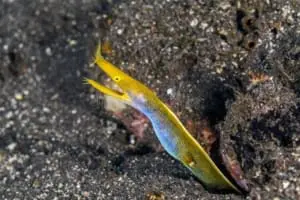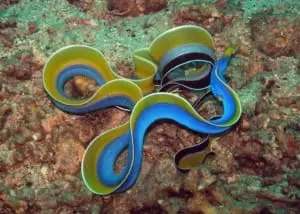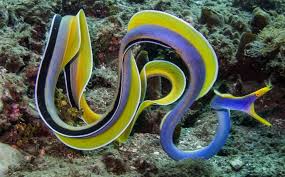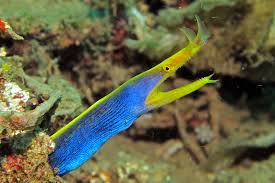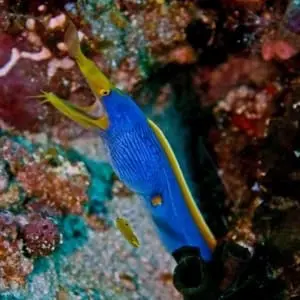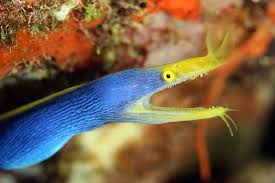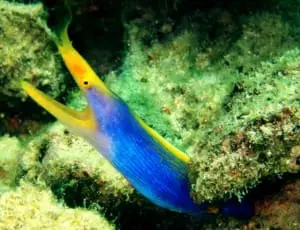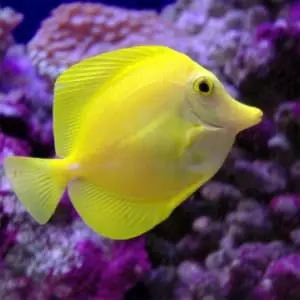Blue-Ribbon Eel Care
Below you will find detailed information on blue ribbon eel care provided by our biologist including the following:
- blue ribbon eel care
- blue ribbon eel
- blue ribbon eel origin
- blue ribbon eel size
- blue ribbon eel water filtration
- blue ribbon eel tank
- blue ribbon eel breeding
- blue ribbon eel tank mates
- how to set up a blue ribbon eel tank
- blue ribbon eel lifespan
- blue ribbon eel diet
- how to care for blue ribbon eel
- blue ribbon eel water salinity
- blue ribbon eel tank size
- blue ribbon eel info
- blue ribbon eel information
- blue ribbon eel aggression
- blue ribbon eel lighting
- where do blue ribbon eels live
- blue ribbon eel oxygen
- blue-ribbon eel care
- ribbon eel care
- eel for sale
- eels for sale
- blue ribbon eel for sale
- ribbon eel for sale
- black ribbon eel for sale
- Bernis Eel for sale
- Leaf-Nosed Moray Eel for sale
- other saltwater fish for sale
Blue-Ribbon Eel Tank
Keeping a Blue Ribbon Eel presents various unique challenges, most of which can be overcome during tank set up.
Blue-Ribbon Eel Water Salinity
Blue Ribbon Eels require saline water. This is achievable by mixing fish tank salt into the aquarium. The guideline is one half cup of salt per every one gallon of water. A proper salinity level for saltwater fish is 1.024-1.025.
Ribbon Eel Oxygen
Ribbon eels spend a lot of time at the bottom of the tank, so making sure oxygen can reach them is very important. Bubblers and water filters can help with the distribution of oxygen in the water. With these eels, creating a lot of water flow from the bottom of the tank upwards is the right way to go about creating substantial oxygen. Oxygen forms in the tank when the water is in contact with the oxygen above the tank. Pulling water from the bottom of the tank to the top brings fresh water to the bottom too.
Ribbon Eel Lighting
Ribbon eels prefer to hide, although moderate levels are lighting are enjoyed. Your blue ribbon eel for sale must have dark sections of the tank for them to hide. These areas act as sort of a safe zone. If the eel gets frightened, they simply retreat back into the dark.
Eel Water Filtration
Ribbon eels require almost perfect water quality. A pH of about 8.3 should be maintained and there should absolutely not be any ammonia, nitrites or nitrates. A temperature of 72-78 F will ensure a healthy eel. A dKH between 8-12 should be kept too. They require regular water changed and excellent filtration because they eat a lot.
Tank Mates For Blue Ribbon Eels
Blue ribbon eels are not likely to become a predator in your tank because of their small size. They are much smaller than most other eels, so they are not threatening to other fish. They will only eat fish that can fit in their mouths. To avoid any preying on other fish, house your blue ribbon eel with older, bigger fish. Avoid purchasing an eel that was caught using cyanide because they almost never outlive two years.
You have to watch out for other fish preying on your ribbon eel, rather than your eel praying on its tank mates. Although a bit risky, it is possible to house them with larger eels.
Leaf-Nosed Moray Eel Tank Size
Ribbon eels require tank that is at least 40 gallons because they are long. As your eel grows, its tank should grow also. At full maturity, a tank of 60+ gallons is required for your blue ribbon eel.
Blue-Ribbon Eel Aggression
Blue Ribbon eels are semi-aggressive, but there are some precautions you can take to ensure minimum aggression. After being set free in the tank for the first time, ribbon eels have a tendency to look for their home. They usually chose a place where they can fit to hide but also be able to watch the tank simultaneously. This creates a stress free low aggression pet. Setting up a series of PVC tubes below the sand bed is the easist way to do this. 1″ pipes are fine, but we recommend 1 1/4″ pipes to make it more spacious.
Bernis Eel Size
Ribbon eels are on the smaller side when it comes to eels. At full maturity, they can grow up to 2 feet, but remain very thin. People tend to favor this eel because of its smaller size. This means it is less of a threat to other fish in its tank.
Eel Diet
The first time feeding your blue ribbon eel is the most challenging. After the first time however, it gets much easier. They have very bad eyesight and solely rely on smell to find their prey. Some eels begin feeding right away, but it really depends on the eel. For the eels that are not so brave, you could start feeding the whole tank to entrige the eel, hold frozen food in front of it and allow it to smell it, or release live food into the tank.
After feeding becomes easier, you can hold frozen food in front of them. A feeding stick is required because they have really poor eyesight so they could accidentally bite you. Small feeding sticks work best for ribbons. Try not to move the stick or else the eel could mistake it for another eel and just wait until the next feeding.
Eels prefer crustaceans with calamari, shrimp, mussels, fish and frozen silversides being good food choices too. It is important to incorporate whole foods into your blue ribbon eels diet while still keeping it as varied as possible.
Blue Ribbon Eel Lifespan
The blue ribbon eel is very unique in that it changes colors based off of the stage of life its in. Colors vary between black, blue and yellow. They can live for up to 20 years if taken proper care of.
Ribbon Eel Breeding
The only time opposite sex ribbon eels encounters each other is when they intend on mating. When the water is warmest, they mate. After laying eggs, the females die a month later. The eggs are leaf shaped. The eggs float around the ocean for 8 weeks prior to hatching.
Blue Ribbon Eel Origin
The blue ribbon eel originated in Indo-Pacific ocean, ranging from East Africa to southern Japan, Australia and French Polynesia and can be found in lagoons and reefs.
Blue Ribbon Eel For Sale
Here at saltwater fish shop, we guarantee you the nicest, healthiest and vividly colored blue ribbon eels for sale online, anywhere. If you’re searching for a hardy ble ribbon eel to add to your marine aquarium, choose Saltwater fish shop!
